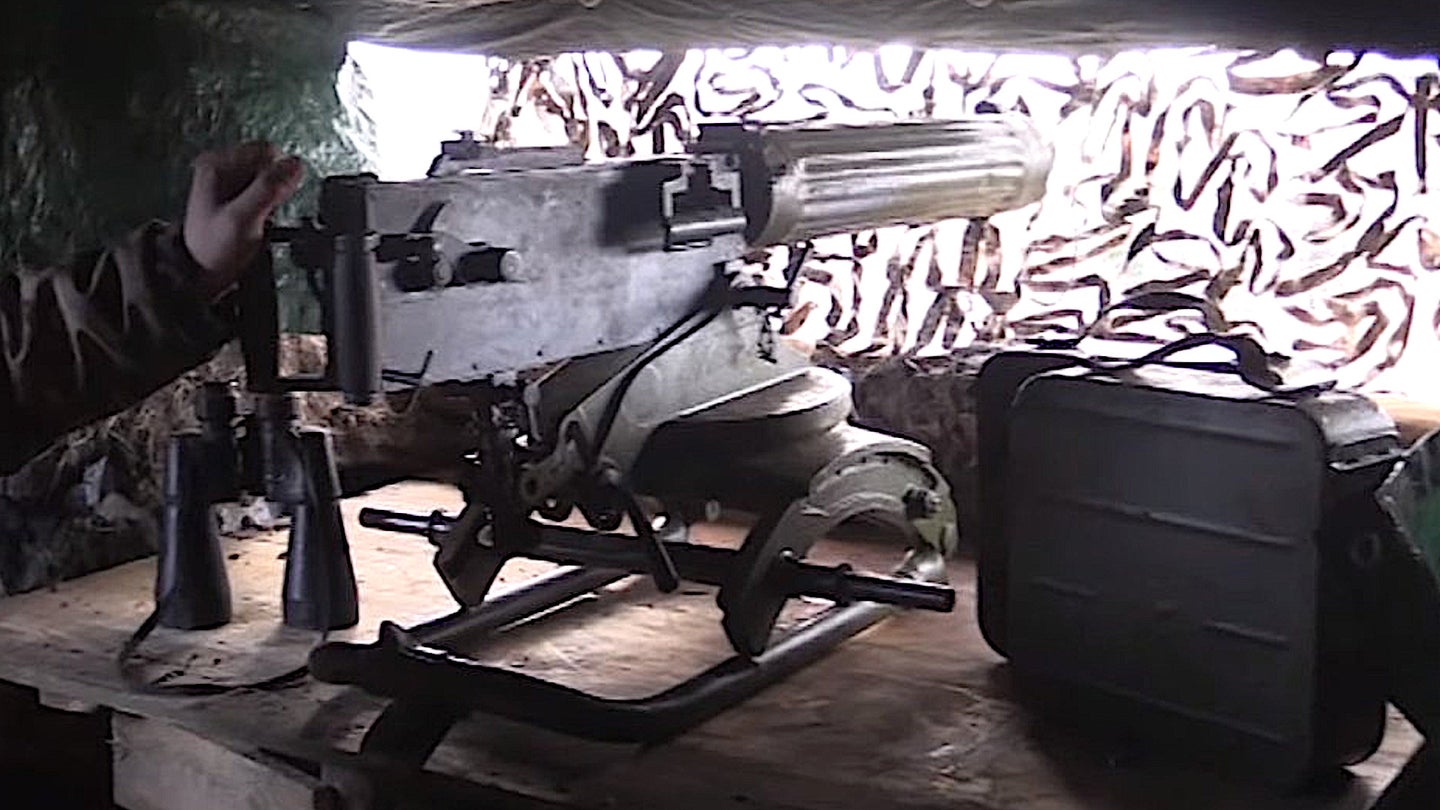Depending on the gunner and conditions, a barrel modification might be required as typically as every 200 to 250 rounds. When the hot barrel was eliminated, it was reserved until it was cool enough to utilize once again. Machine-gun groups would have as many as 6 extra barrels on hand.
Driving through a recently protected location in Belgium, the observant Liniewski found the abandoned weapon in a field. Liniewski then did what any without supervision GI would have performed in that position; he stopped his truck and seized the opportunity to snag a fantastic souvenir for the folks back home. As a support soldier, Liniewski was not familiar enough with weapons to dismantle his MG-42, so he held on to it for a while up until he found a camp where German prisoners of war were being held.
The weapon stayed in the Liniewski household till 2016 when his kid Marty contributed the weapon to the Museum. In spite of its tendency to get too hot, the MG-42 was an exceptional weapon that was light-years of ahead of the United States equivalent, the Browning M-1919A4 maker gun. Germany produced approximately 400,000 MG-42s during the war, a few of which are still in active service.

Taken together, all these weapons gave the Red Army a more useful variety of assistance weapons, much better able to challenge the Germans for fire superiority on the battleground. Totally illustrated, this research study discusses the technology and the methods of these maker weapons. Kept in mind authority Chris Mc, Nab sets out how these gatling gun were distributed and tactically used and provides various examples of the weapons in action, from assault groups on the streets of Stalingrad to tank crews having a hard time for survival at Kursk.
Excitement About Loading First World War Machine Guns
Illustrated with premium pictures and specially commissioned artwork, this is a deep analysis of these important tools of warfare within the Soviet forces.
Taken together, all these weapons provided the Red Army a more useful series of assistance weapons, much better able to challenge the Germans for fire supremacy on the battlefield. Fully illustrated, this study discusses the technology and the techniques of these maker weapons. Kept in mind authority Chris Mc, Nab sets out how these maker guns were distributed and tactically applied and supplies numerous examples of the weapons in action, from assault teams on the streets of Stalingrad to tank crews struggling for survival at Kursk.
Illustrated with top quality photographs and specifically commissioned artwork, this is a deep analysis of these vital tools of warfare within the Soviet forces.
The gatling gun business, commanded by a captain, had an assigned strength of six commissioned officers and 172 employed men, and brought 16 weapons, four of which were spares. Within the business there were three squadrons and a headquarters area. A very first lieutenant led the first squad, while 2nd lieutenants led armies two and three.
Facts About New Weapons Of World War 1 Revealed


Within each area were 2 weapon teams, each with one weapon and 9 males, led by corporals. The weapon team had one fight cart, pulled by a mule, to carry its weapon and ammo as near the shooting position as opponent fire permitted. From there the teams moved the weapons and ammo forward by hand.
The battalion had a strength of 16 officers and 377 enlisted men and was motorized. However, it had just 2 business, similar to the other machine gun companies in terms of workers and weapons. Each gun team utilized an unique motor cars and truck to carry its workers, weapon and devices. The battalion was normally in department reserve, prepared to perform missions as the department leader bought.
In this function the weapons were put 300 to 1000 meters to the rear of the cutting edge. When they used their guns in that style, the maker weapon officers frequently ran into opposition from the rifle business leaders, who preferred to have the guns further forward, fearing that their infantrymen would be at danger of stray low rounds as they advanced under the overhead machine weapon fire.
They soon found that the device guns were high top priority targets for enemy fire, and that it was advantageous to have the weapons at some distance from the infantry positions. Since opponent device weapons presented the best risk to the attacking soldiers, the gatling gun crews strove to locate the opponent guns and to focus their fire upon them.
The 9-Minute Rule for Weapons Used By The Australian Army In World War I
A percentage of the weapons was held back as a reserve under command of the device weapon officer. 6Machine weapon tactical doctrine dictated that in the defense the Hotchkiss guns must just rarely lie within 100 lawns of the cutting edge which at least two-thirds of the guns ought to be echeloned back through the entire protective position, situated so that adjacent guns would be mutually supporting.

7 To discover other functions on the go to our THE DOUGHBOY CENTER wants to constantly expand this function. Additions and discuss these pages may be directed to:.
I was impaled on this. My only worry was that he would press the trigger which would have made a hell of a mess. In the meantime, my sergeant who was near he saw me; can be found in close; shot the fellow and then hoisted me, with the aid of another man, off the bayonet.
He was dead and it wasn't enjoyable. A bayonet injury directly it enters it hurts and the withdrawal is most likely further suffering than the 'putting in' since the 'putting in' is instantaneous. Another kind of weapon was the trench club. These could be used on trench raids and in close quarter fighting.